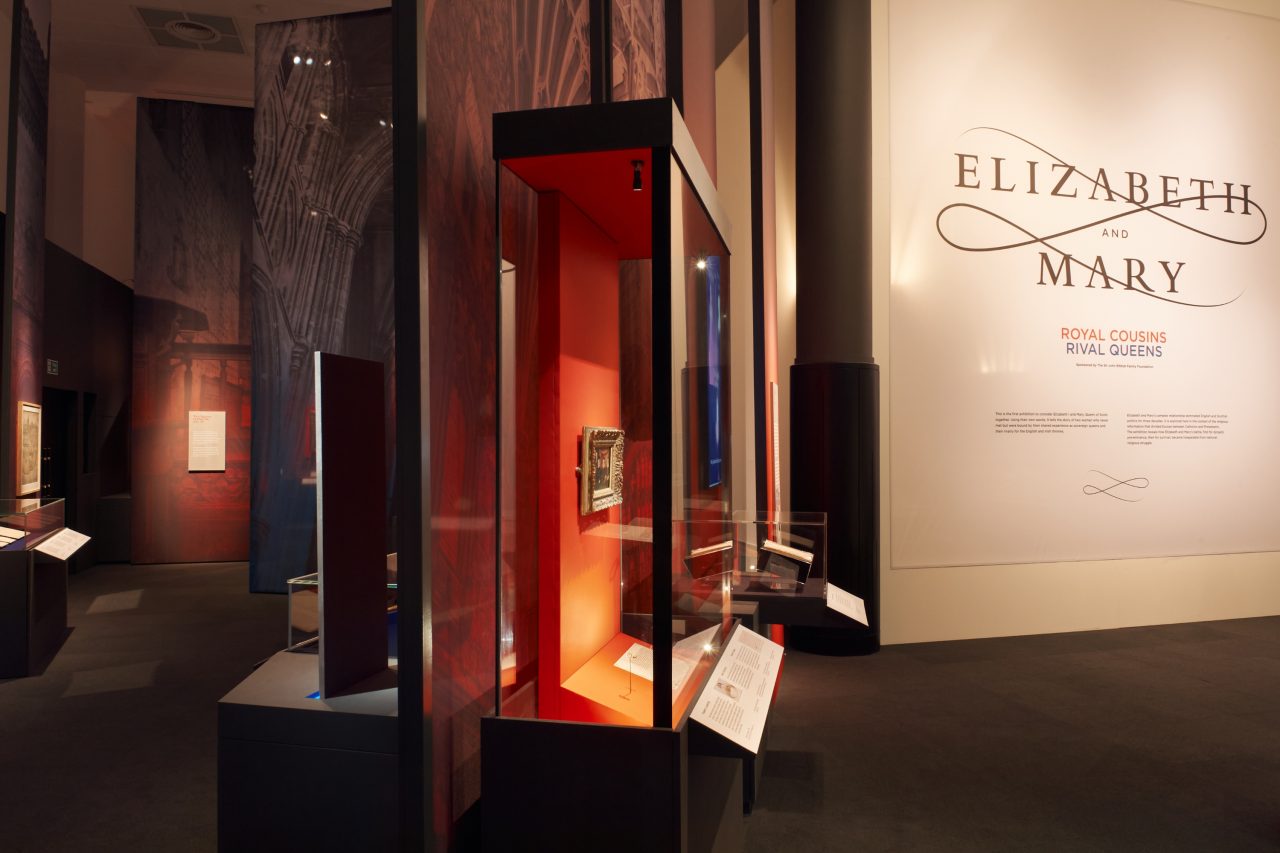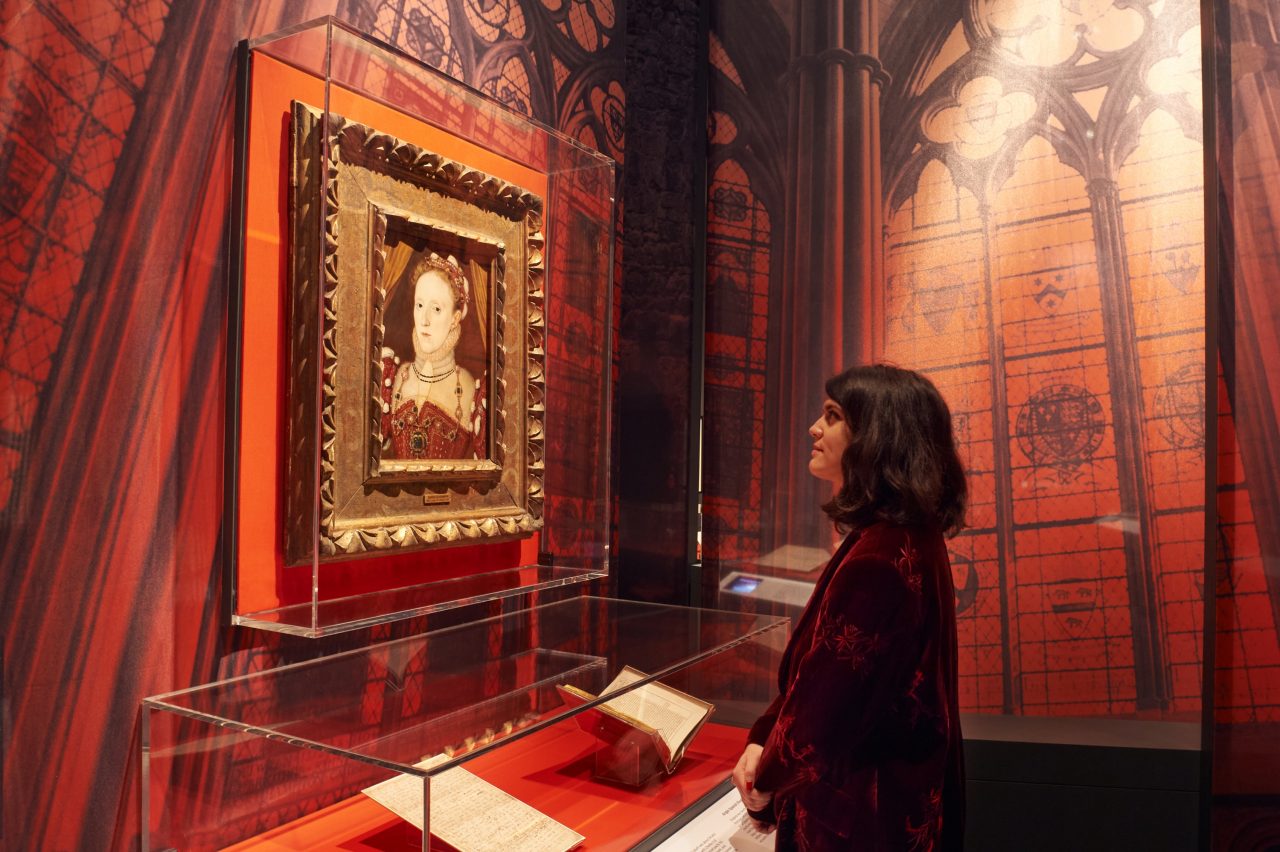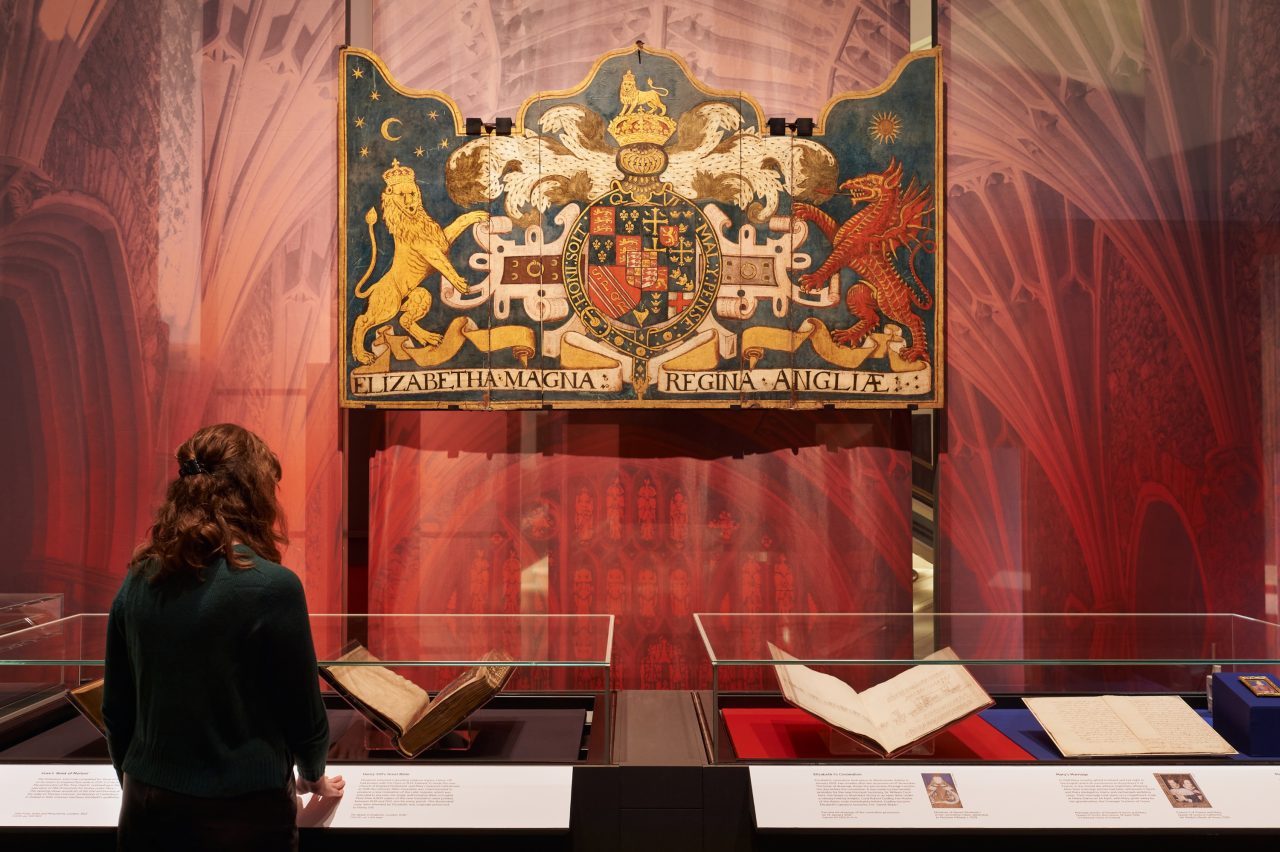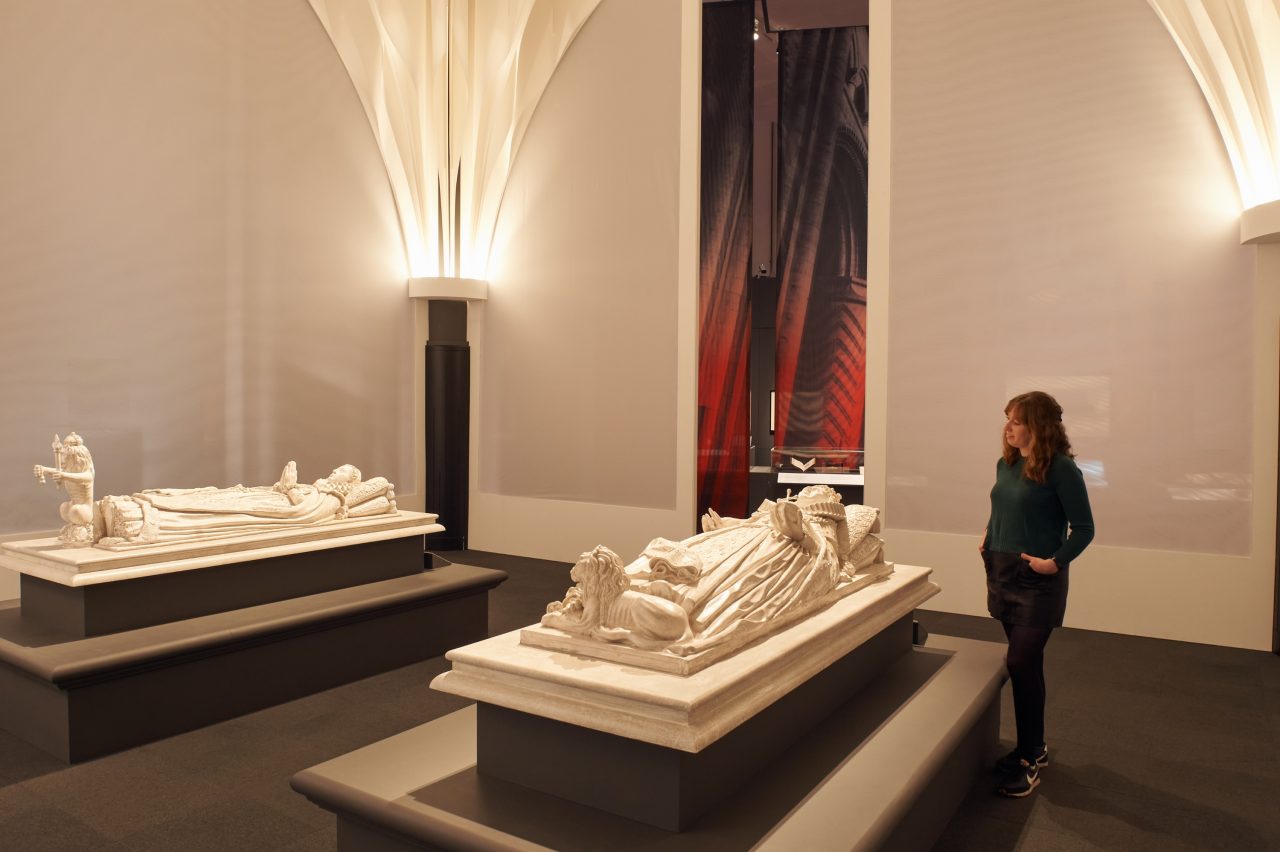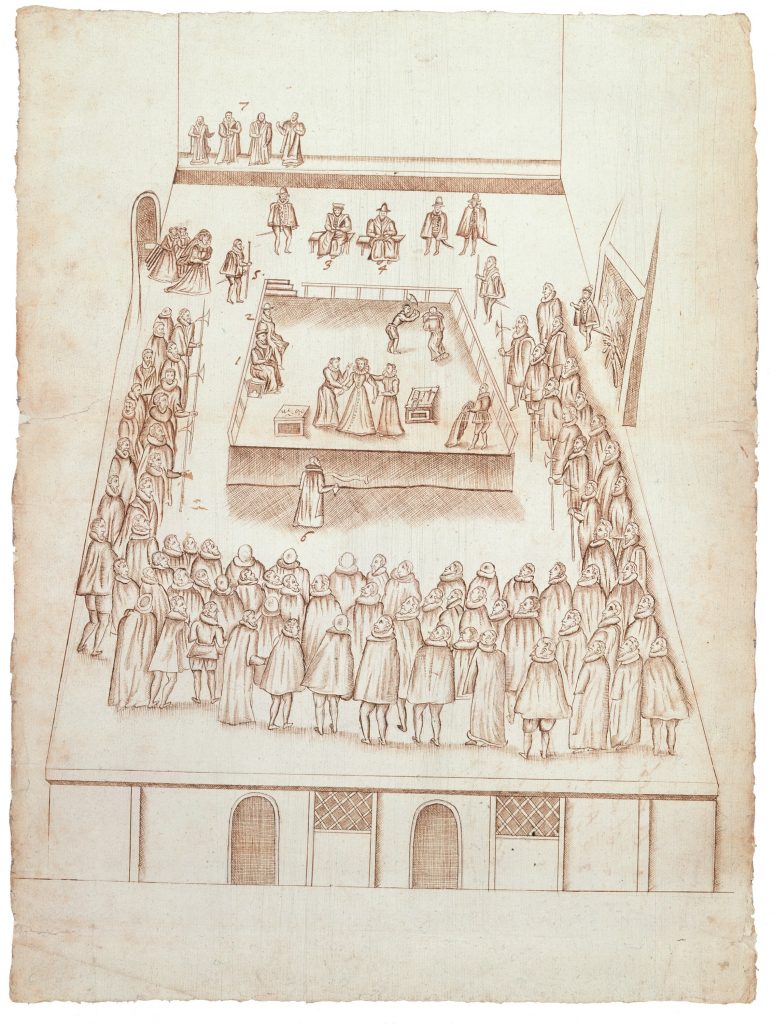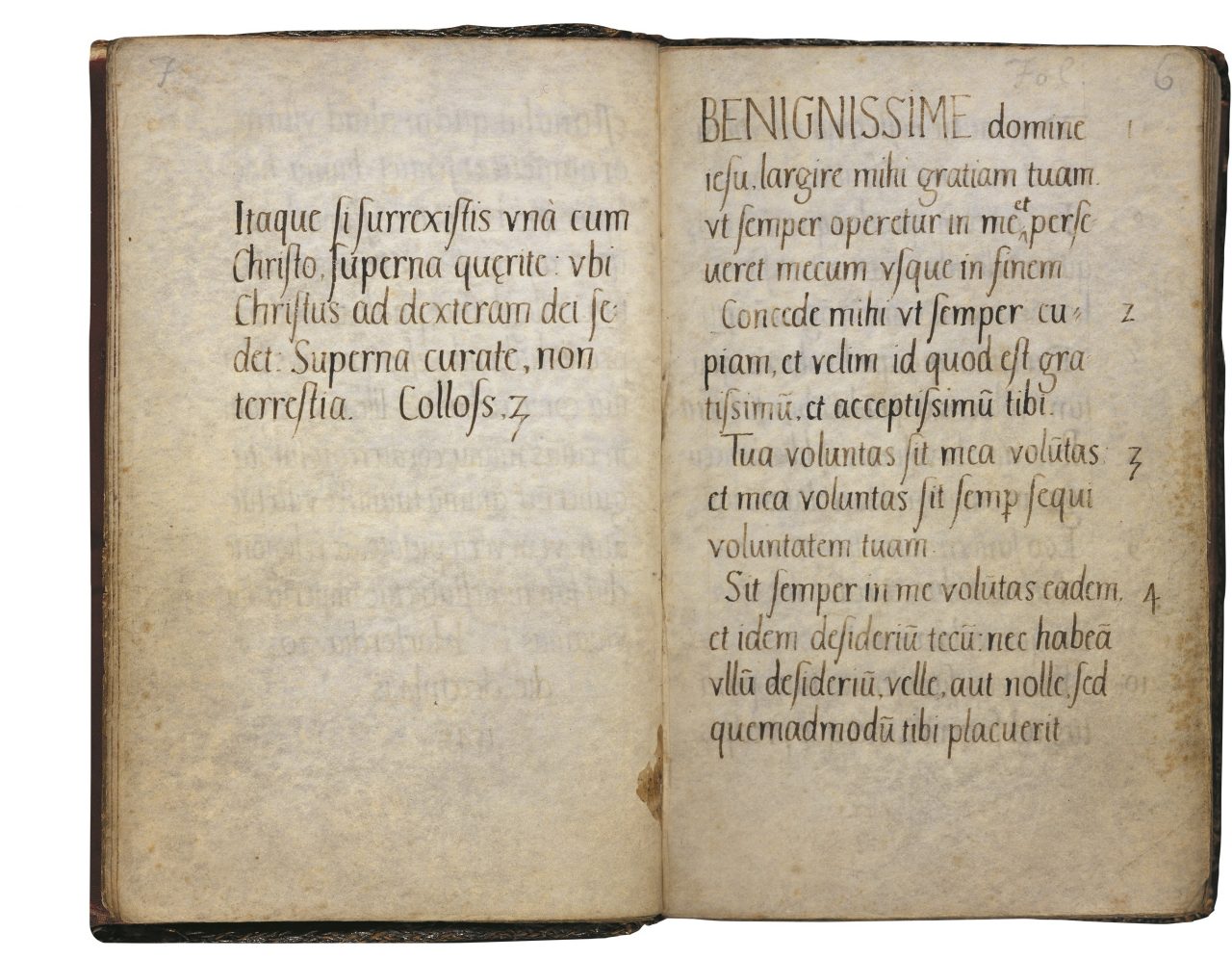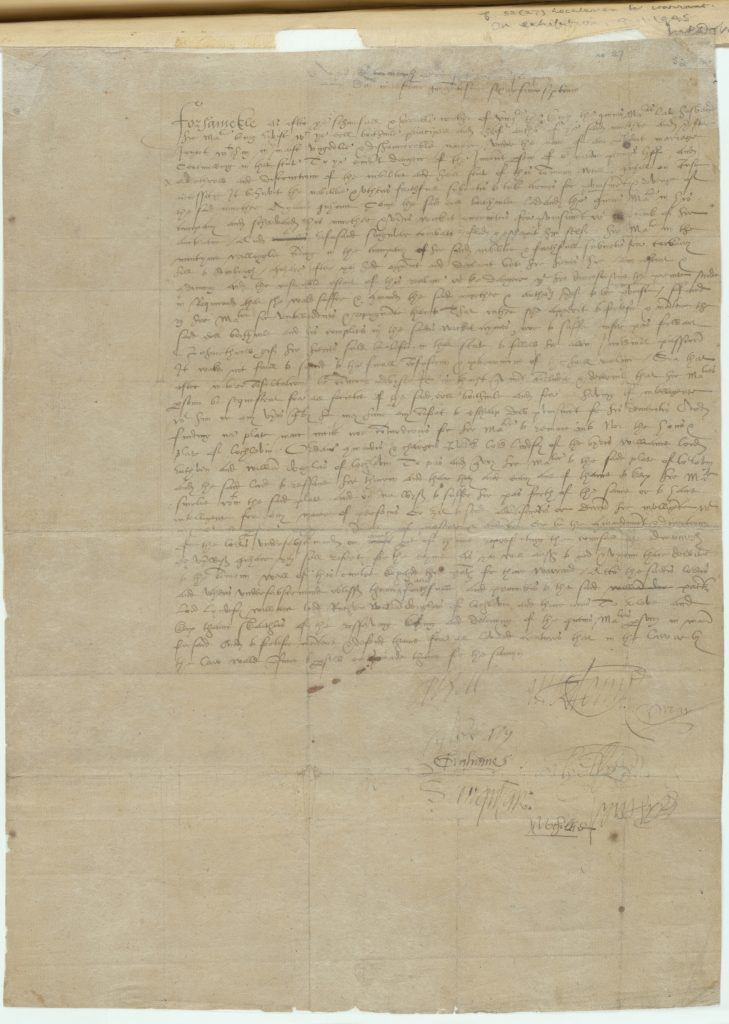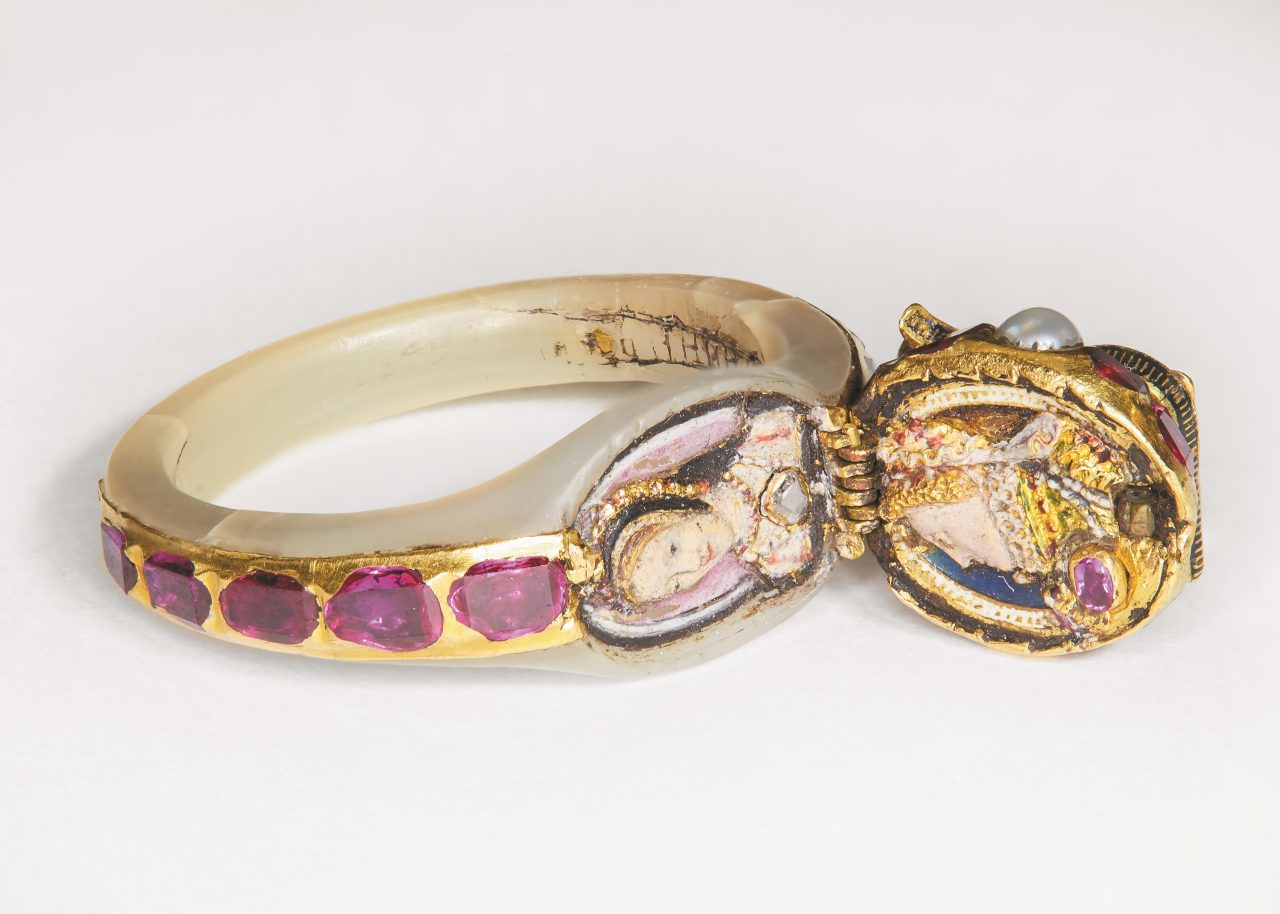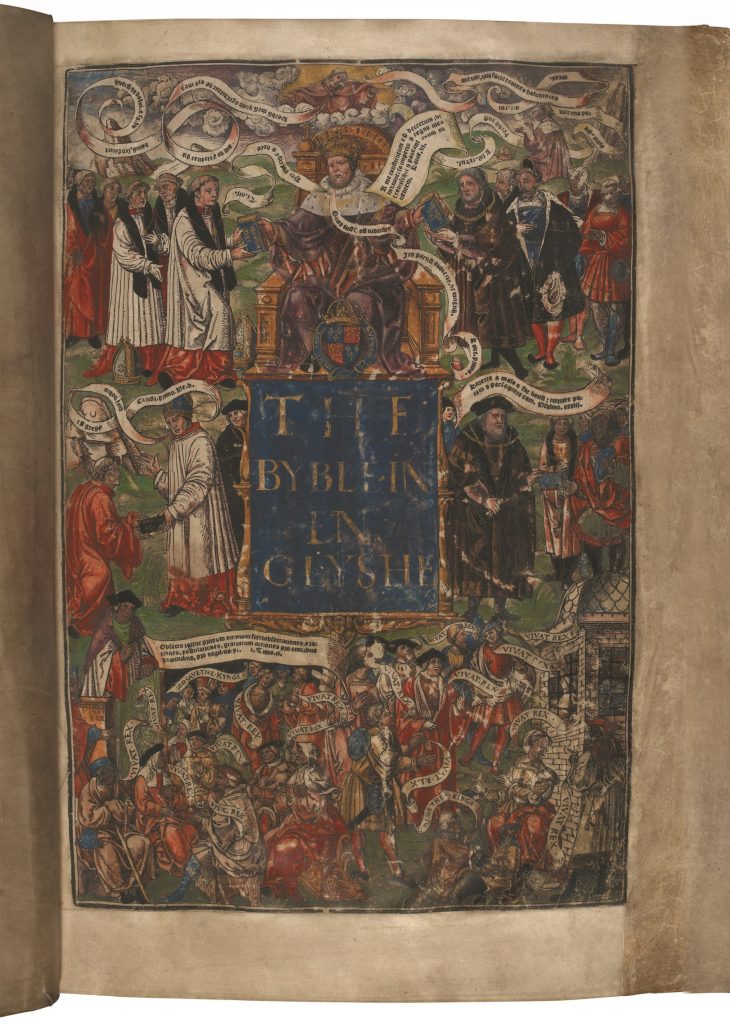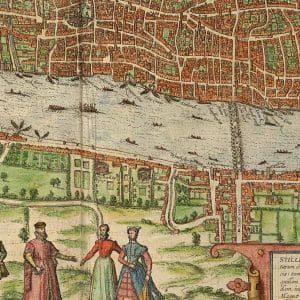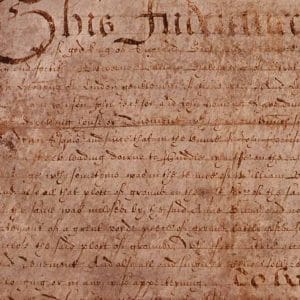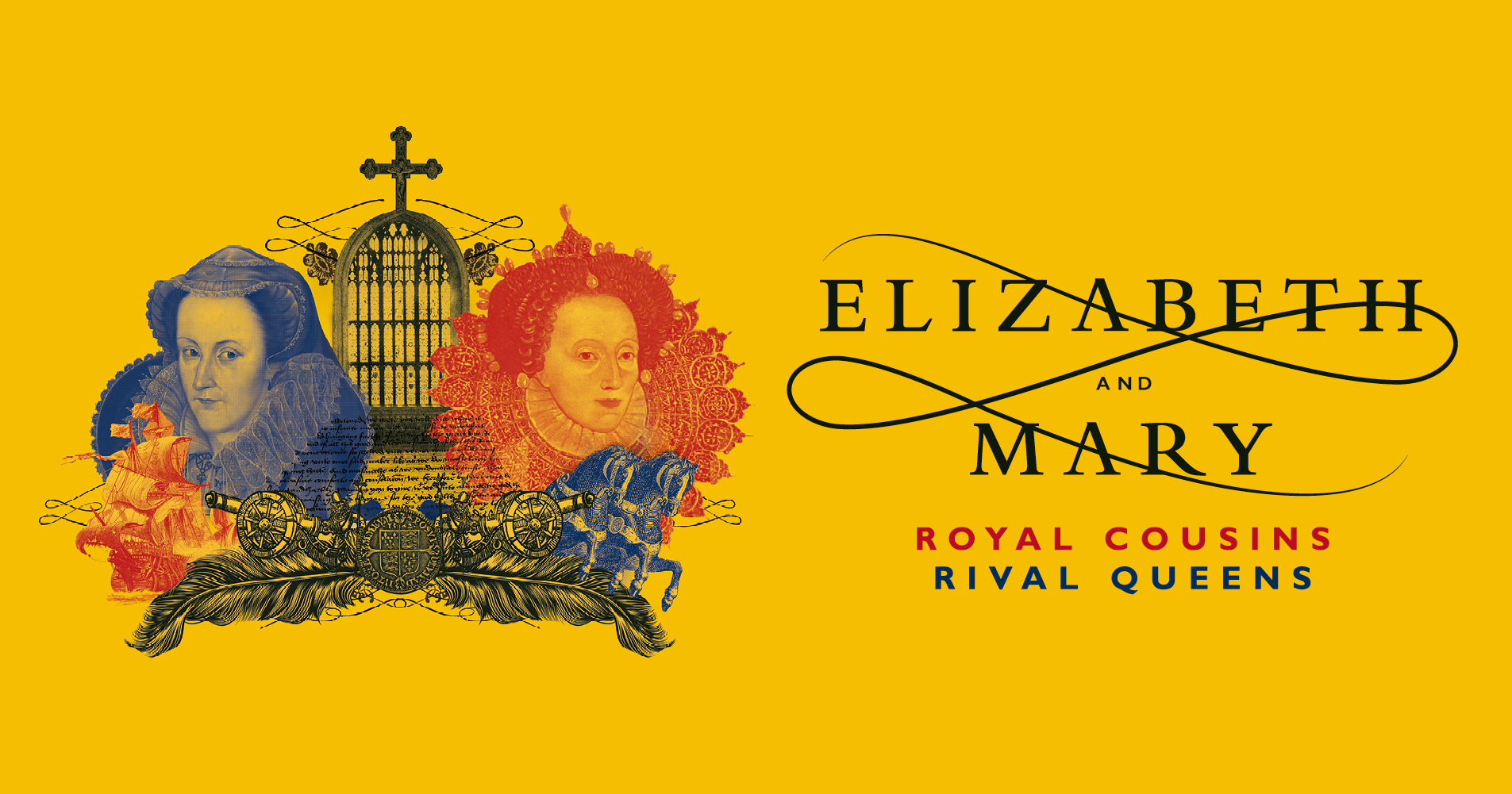
Elizabeth and Mary: Royal Cousins, Rival Queens
The exhibition takes a fresh and revealing look at the infamous story of two powerful queens bound together by their shared Tudor heritage, whose turbulent relationship dominated English and Scottish politics for thirty years.
- First ever exhibition to consider Elizabeth I and Mary, Queen of Scots together, putting them both centre stage and giving them equal billing
- Rare opportunity to see original documents written in the queen’s own hands and words alongside 16th-century maps, paintings and jewels
- Accompanied by a programme of events, range of merchandise and 600 early modern manuscripts now being freely available online
Elizabeth and Mary: Royal Cousins, Rival Queens (8 October 2021 – 20 February 2022) is the first major exhibition to consider Elizabeth I and Mary, Queen of Scots together, putting them both centre stage and giving them equal billing. The exhibition takes a fresh and revealing look at the infamous story of two powerful queens bound together by their shared Tudor heritage, whose turbulent relationship dominated English and Scottish politics for thirty years.
From amicable beginnings to distrust and betrayal, the exhibition explores the complex relationship between Elizabeth I and Mary, Queen of Scots through their own words. Despite their fates being intertwined, the queens never met and their relationship was played out at a distance, much of it by letter. This exhibition offers a rare opportunity to see their original correspondence.
Drawing on the British Library’s outstanding collection of early modern manuscripts and printed books, Elizabeth and Mary’s autograph letters will be displayed alongside 16th-century state papers, speeches and cipher documents, as well as beautiful maps, drawings and woodcut engravings to illustrate key moments and events. There will also be paintings, jewels, textiles, maps, drawings and objects borrowed from private and public collections in the UK and Spain.
Dr Andrea Clarke, lead curator of Elizabeth and Mary: Royal Cousins, Rival Queens at the British Library, said:
‘Almost 500 years on, the story of Elizabeth I and Mary, Queen of Scots continues to fascinate and enthral. It is a story of two women whose lives were inextricably connected, for not only were they fellow sovereign queens but also, as Mary reminded Elizabeth in countless letters to her, ‘both of one blood, of one country and in one island’. It is remarkable that many of the themes woven through the exhibition narrative, such as Anglo-Scottish relations, international diplomacy and Europe, state surveillance and espionage, still have a deep resonance today.’
Revealing a dangerous world of plots, espionage and treachery, Elizabeth and Mary: Royal Cousins, Rival Queens will explore how the drama unfolded against the backdrop of an England and Scotland deeply divided between Protestants and Catholics and a Europe torn apart by religious conflicts and civil wars.
Exhibits include:
- Elizabeth’s handwritten translation of her stepmother Katherine Parr’s Prayers and Meditations (1545), which was a gift for her father Henry VIII
- Sonnet handwritten by Mary, Queen of Scots the night before she was executed (1587), which might be the last thing she ever wrote, on loan from the Bodleian Library
- Elizabeth I’s mother of pearl locket ring (c.1575), which opens to display miniature portraits of herself and her mother Anne Boleyn, by kind permission of the Chequers Trust
- Late 16th-century gold necklace and gold enamelled, heart-shaped locket set with two miniature portraits said to be of Mary and her son, James VI, on loan from National Museums Scotland. Known as the ‘Penicuik Jewels’, they are thought to have been given away by Mary, Queen of Scots at her execution
- ‘The Marian Hanging’ decorated with embroideries sewn during Mary Queen of Scots’ English imprisonment, on loan from the Victoria and Albert Museum
- Portrait of Mary, Queen of Scots painted by the leading French painter François Clouet (c.1560-61), lent by Her Majesty the Queen from the Royal Collection
- Portrait of Elizabeth I attributed to George Gower (c.1567), which provides one of the very best likenesses of her, on loan from a private collection
- Elizabeth I’s speech dissolving parliament in 1567 where she attacked MPs questions about the succession as ‘lip-laboured orations out of such jangling subjects’ mouths’
- Warrant confining Mary, Queen of Scots in Lochleven Castle in 1567, following her forced abdication for refusing to try her third husband, James Hepburn, Earl of Bothwell, for the murder of her second, Henry Stewart, Lord Darnley, on loan from the National Library of Scotland
- The first letter handwritten by Mary, Queen of Scots in English, sent to Sir Francis Knollys after fleeing across the border into England (1568)
- Robert Beale’s eye-witness drawing of Mary, Queen of Scots’ execution (1587), depicting her entering the hall, disrobing, and placing her head on the block
- Henry VIII’s last will and testament (1546), which established the succession after his death, on loan from The National Archives
- King Henry VIII’s Great Bible (1540) printed by Edward Whitchurch on vellum and illuminated, which was later inherited by Elizabeth I
- 15th-century carved stone head, which was once part of a full-length figure of St Andrew at St Andrews Cathedral and was toppled at the Reformation, on loan from the Board of Historic Environment Scotland
- Hand drawn map of the British Isles by antiquarian Laurence Nowell (1564-5), which belonged to Elizabeth’s closest adviser, Sir William Cecil
There is a programme of talks, panel discussions, lectures and cultural events to accompany the exhibition, and a new catalogue edited by Professor Susan Doran with essays from leading Tudor historians, which is available from the British Library shop and all major bookstores.
The exhibition is sponsored by The Sir John Ritblat Family Foundation, with thanks to the John S Cohen Foundation and all supporters who wish to remain anonymous. The exhibition catalogue is supported by The Strathmartine Trust.
The early modern period is the first in British history to be so thoroughly documented in manuscripts, letters and state papers and, to coincide with the exhibition, the British Library has digitised 600 of its early modern manuscripts, many of them with the generous support of industrialist and philanthropist Mark Pigott, KBE, KStJ.
